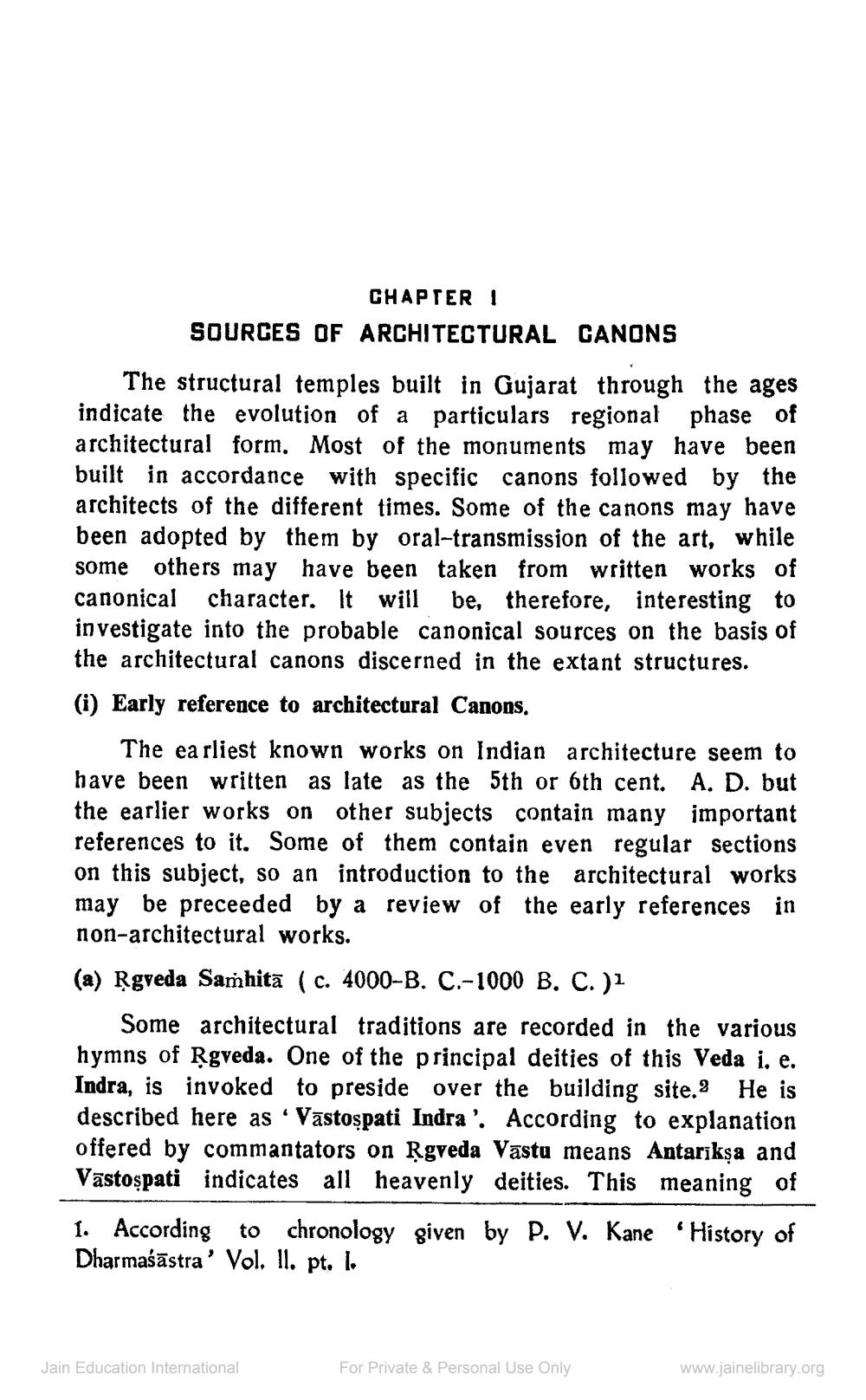________________
CHAPTER 1 SOURCES OF ARCHITECTURAL CANONS The structural temples built in Gujarat through the ages indicate the evolution of a particulars regional phase of architectural form. Most of the monuments may have been built in accordance with specific canons followed by the architects of the different times. Some of the canons may have been adopted by them by oral-transmission of the art, while some others may have been taken from written works of canonical character. It will be therefore, interesting to investigate into the probable canonical sources on the basis of the architectural canons discerned in the extant structures. (i) Early reference to architectural Canons.
The earliest known works on Indian architecture seem to have been written as late as the 5th or 6th cent. A. D. but the earlier works on other subjects contain many important references to it. Some of them contain even regular sections on this subject, so an introduction to the architectural works may be preceeded by a review of the early references in non-architectural works. (a) Rgveda Samhita (c. 4000-B. C.-1000 B. C.)
Some architectural traditions are recorded in the various hymns of Rgveda. One of the principal deities of this Veda i, e. Indra, is invoked to preside over the building site. He is described here as · Vastospati Indra'. According to explanation offered by commantators on Rgveda Vastu means Antarīkșa and Vastoșpati indicates all heavenly deities. This meaning of 1. According to chronology given by P. V. Kane History of Dharmaśāstra' Vol. II. pt. I.
Jain Education International
For Private & Personal Use Only
www.jainelibrary.org




